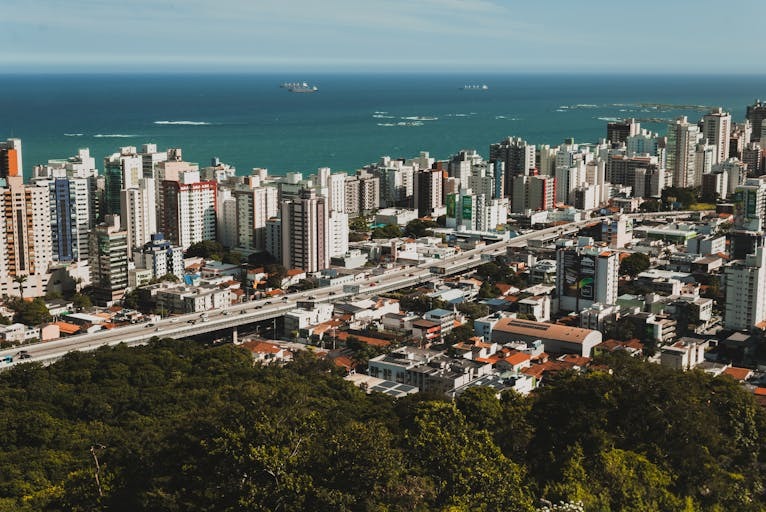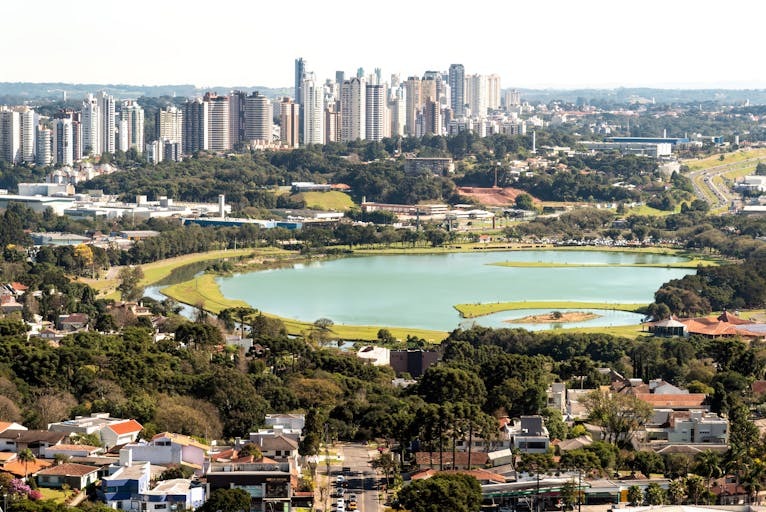What are the pros and the pitfalls of retiring in Brazil?
Considering a leap to retire in Brazil, where sunshine, samba, and a cost-friendly lifestyle beckon, the quickscan grid below balances the sparkle with the snags so you can judge for yourself whether Brazil is a good place to retire.
| Positives | Watch-outs |
|---|---|
| Warm weather – tropical and subtropical climates invite year-round flip-flops. | Climate extremes – heat, humidity, and heavy rains can feel overwhelming. |
| Friendly locals – welcoming, community-minded people quickly make newcomers feel included. | Safety concerns – pickpocketing and higher crime rates in certain neighbourhoods require vigilance. |
| Vibrant culture – music, festivals, and fresh cuisine keep life colourful and social. | English is not widely spoken – basic Portuguese is vital for errands, paperwork, and deeper connections. |
| Growing expat networks – established communities in Florianópolis, Fortaleza, and Curitiba can soften the landing. | Bureaucracy can test patience – multistep paperwork and long queues are part of daily admin. |
With beaches, hiking trails, and sidewalk cafés in easy reach, Brazil’s year-round outdoor living adds an irresistible layer to the retirement equation.
Brazillian retirement visa (VITEM XIV) – your ticket to tropical freedom
Brazil’s VITEM XIV is the retirement gateway that lets US expats lock in long-term beach time – and keep their tax strategy on track. Below is the 2025 low-down, trimmed to the essentials so you can hit apply without second-guessing the fine print.
Quick-fire checklist – what you need in 2025
Minimum proof of pension or passive income ≥ US $2,000 (≈ R$ 6,000) per month – plus R$ 2,000 for every dependent you bring along.
Funds must land in a Brazilian account every month; bank statements or SSA letters work as evidence.
Paperwork that passes muster
-
Valid passport (10-year recommended lifespan).
- FBI background check (apostilled).
- Proof of pension/annuity statements.
- Private health insurance certificate.
- Birth certificate & marriage certificate (if applicable).
- Certified Portuguese translations for every foreign document – only sworn translators (tradutor juramentado’) are accepted.
Timing & free wait times to access visa slots: Consular approvals now average 68 weeks as demand surges.
Many Brazilian consulates publish free wait times to access appointment calendars online – grab the earliest slot and set alerts for cancellations.
Arrival formalities
-
Register with the Federal Police within 30 days of landing to collect your CRNM residency card and CPF tax ID.
- Keep a digital copy of your visa and CRNM handy – you’ll need them for opening bank accounts and signing leases.
Renewal & path to permanence: Initial residence is one-two years. Note that initial visa validity is 1 year (renewable once) at most consulates; so renew once with updated income proofs.
After four years living in Brazil, convert to permanent residency without the income requirement; citizenship becomes an option four years later, all while retaining US nationality.
Start gathering those apostilles, stalk the nearest Brazilian consulate for year-and-free-wait-times-to-access updates, and let our TFX team keep your cross-border taxes as relaxed as your new beach commute.
Filing at a Brazilian consulate – your clear five-step roadmap
Step 1 – Prepare your application packet.
Start by assembling your passport (valid for at least one year), printed e‑Consular form receipt, and a recent 2″×2″ photo.
Include proof of retirement income (at least US$2,000/month or 6,000 BRL, plus 2,000 BRL per dependent), six-month bank statements, FBI background check, private health-insurance certificate, apostilled birth certificate and sworn translation into Portuguese
Step 2 – Schedule and attend the appointment.
Log into the e‑Consular portal to schedule appointment online at your nearest mission and choose a slot early to avoid delays.
On consular day bring original docs and copies, submit the packet, provide fingerprints and answer final questions about how you’ll transfer monthly funds .
Step 3 – Pay fees.
You’ll need to pay the consular fee, approximately US$290 (or local‑currency equivalent), via money order, boleto or on‑site card if accepted.
Keep the stamped receipt as proof in case the system prompts you to “pay consular fee” after booking.
Step 4 – Track application status.
After submission, the average processing time is six to eight weeks, with demand peaking in 2025.
Check e‑Consular weekly for status updates and notifications for additional documents; “issued” status means your passport is ready for pick‑up or mailing.
Step 5 – Complete first entry registration.
Upon first entry into Brazil, ensure the immigration officer stamps your visa before you leave the airport.
Then within 90 days report to the Federal Police in your city with passport, visa copy, sworn translation of birth certificate, proof of address and visa copy to register and receive your CRNM.
Cost of living breakdown: Brazil’s hotspots for retirees
| City | Rent | Utilities | Groceries | Dinner-out 4 | SUS care | Monthly total |
|---|---|---|---|---|---|---|
| Rio de Janeiro | R$ 2,495.91 | R$ 563.76 | R$ 1,069.29 | R$ 800 (4 × R$ 200) | R$ 0 | R$ 4,928.96 |
| Florianópolis | R$ 2,882.35 | R$ 348.47 | R$ 741.28 | R$ 800 (4 × R$ 200) | R$ 0 | R$ 4,772.10 |
| Curitiba | R$ 2,076.50 | R$ 396.26 | R$ 948.90 | R$ 720 (4 × R$ 180) | R$ 0 | R$ 4,141.66 |
| João Pessoa | R$ 1,225 | R$ 420 | R$ 915.54 | R$ 600 (4 × R$ 150) | R$ 0 | R$ 3,160.54 |
Cost of living data sourced from Numbeo.
How to read the table
-
Rent = 1-bed apartment, city-centre
- Utilities = electricity, water, garbage for 85 m² apartment
- Groceries = Numbeo’s monthly minimum food basket (31-day Western diet)
- Dinner-out = four date-night, three-course meals for two at a mid-range restaurant
- SUS care = Brazil’s public health system is free at point of service; many expats add private plans (≈ R$ 400–700/month) which are not included in the totals
Hidden-tax reminder – ICMS already baked in
Brazil’s state VAT (ICMS) ranges 7 - 18% and is included in shelf prices, so the figure you see is what you pay at checkout – no extra sales tax surprise when you reach the cashier.
Prime Brazil spots for US retirees – 2025 picks
Rio de Janeiro
Home to about 6.7 million people, Rio offers iconic beach living that draws many US expats chasing sun and culture. Its vibrant social life is unmatched, but daily life requires smart planning.
With a Safety Index of 24.8 and Health-Care score of 46.3, private healthcare and safe housing are musts.
Florianópolis
This scenic island city of 1.3 million blends natural beauty with a strong digital nomad and expat community. Known for its chill coastal lifestyle and clean air, it’s one of Brazil’s safest metro areas.
Safety Index 52.9 and Health-Care 60.5 make it a top pick for retirees seeking balance.
Curitiba & João Pessoa
Curitiba (pop. 1.8 million) boasts cool weather, eco-planning, and an organized lifestyle perfect for introverted expats. João Pessoa ( 888k) delivers tropical charm and affordability on Brazil’s northeast coast.
With Safety ratings of 38.5 and 34.7, and Health-Care scores of 67.0 and 69.4, both cities offer safe, well-supported retirement options.
Healthcare options in Brazil for US expats
Brazil offers universal public healthcare (SUS) to all residents – but long wait times and limited English support lead many US expats to seek private options. Proof of valid health insurance – either through the SUS or a private provider – is now required before a retirement visa can be stamped.
Private health insurance plans range from US $100-250/month and often include access to English-speaking specialists and faster service in private clinics.
Public care is free, including emergency services – one retiree noted, My ER visit cost me $0 with SUS.
In short, SUS offers broad coverage but slower service, while private plans like Bradesco Saúde and Amil provide speed, comfort, and language support at a price.
Taxes for US retirees in Brazil – 2025 tax guide
Brazilian taxes every American retiree must know
Once you become a Brazilian tax resident, several income types and asset classes fall under local tax rules.
- When Brazil starts taxing you – Spend 183 days in any 12-month window and you become a Brazilian tax resident, bringing worldwide pensions, IRA withdrawals, and portfolio income onto the progressive IRPF ladder (0 % ≤ BRL 2,428.80 up to 27.5 % above BRL 4,664.69).
- Extra break for the 65-plus crowd – Retirees aged 65 or older get an additional BRL 1,903.98 a month (plus the 13th-salary slice) completely tax-free before the IRPF rates kick in, effectively doubling the general exemption, per Receita Federal’s May 2025 table update.
- Social Security is taxable but negotiable – US Social Security payments are treated as ordinary pension income in Brazil; however, the Brazil-US Totalization Agreement stops you from paying FICA and INSS on the same dollars and lets contribution credits flow between the two systems.
- Capital-gains snapshot – Long-term gains on real estate or ETFs run 15% up to BRL 5 million, rising step-wise to 22.5% above BRL 30 million; day-trades on B3 shares pay 20%, while non-residents face a flat 15% (25% if living in a listed tax haven).
- Property, inheritance, and other local levies – Expect annual IPTU of roughly 0.3% - 1.5% of municipal value (São Paulo sets 1% for homes, 1.5% for commercial) plus up to 8% ITCMD on gifts or estates. Congress is debating a 16% cap for large transfers.
- INSS basics for part-time work – Should you consult or teach on the side, employee INSS runs 7.5% - 14% up to BRL 8,157.41; self-employed rates range 5% - 20%. Secure a Totalization certificate of coverage first, so the IRS waives SECA.
- Foreign-asset reporting (DCBE) – Hold more than USD 1 million abroad on 31 December and you must file the Banco Central DCBE between 15 Feb - 5 Apr 2025 (quarterly if > USD 100 million); late filings draw fines of BRL 2,500-250,000.
US tax rules retirees in Brazil can’t ignore
Even under palm trees, your IRS duties stay firmly in place. Here’s how to stay compliant and smart with your filing.
- Your never-ending US return – Form 1040 still captures worldwide income; up to 85% of Social Security can be taxable, Roth distributions stay tax-free, and retirees mix the Foreign Tax Credit with the $130,000 Foreign Earned Income Exclusion to erase double hits.
- Extra US paperwork – File an FBAR (FinCEN 114) when all foreign accounts top $10,000 at any time, and Form 8938 once specified assets exceed $200,000 (married filing jointly abroad). PFIC Form 8621 applies to Brazilian mutual funds, so consider ETFs listed in the US instead.
- Smart timing & records – Keep every DARF, brokerage note, and exchange-rate slip; time your arrival to stay under 183 days in year 1; bunch Roth conversions into years you owe Brazilian tax to soak up unused FTC; and request your social-security coverage certificate before taking consulting gigs.
NOTE! Beat double taxation by syncing both calendars – Brazil’s return is due 30 May 2025, while US expats get until 16 June 2025 (payments still 15 April); if you need breathing room, file Form 4868 or use our free extension service to push your paperwork deadline to 15 October 2025.
Make Brazil your tax-smart paradise
From dawn surf in Florianópolis to samba nights in Salvador, Brazil pairs postcard scenery with senior tax breaks that make every US dollar dance. Time your 183-day residency and foreign-tax credits right, and Social Security plus IRA draws stay blissfully double-tax-free.
Taxes for Expats wrangles the Form 1040 grind, FBAR fine print, and Roth strategy while you focus on perfecting your Portuguese. When you’re set to swap spreadsheets for caipirinhas, we’ve got the compliance covered.

FAQ
There’s no set age limit – VITEM XIV hinges on proving a pension of at least 6,000 BRL ( $1,200) a month, not on how many birthdays you’ve had.
Expect about 6-8 weeks on average in 2025, with some consulates warning that heavy demand can stretch reviews to three months.
No – the visa grants residency only; paid work in Brazil must wait until you convert to permanent status.
After four years as a permanent resident (usually eight years total on the retiree path) you may naturalise if you speak Portuguese and show local ties.
Yes – once you’re tax-resident, Brazil treats Social Security like any pension under the 0-27.5 % IRPF, but those taxes can be used as a Foreign Tax Credit on your Form 1040.
Yes – you can drive on a US license (plus IDP) for 180 days, then you must swap it for a Brazilian CNH to stay legal. The swap process is done at DETRAN and usually needs a sworn Portuguese translation of your US license.
Absolutely – just arrive with a vet health certificate (issued within 10 days) and proof of current rabies vaccination given at least 21 days before departure. Brazil now requires electronic USDA endorsement via APHIS Core.







